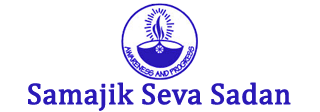
ASIN INDIGENOUS PEOPLES PACT (AIPP)

Of all states in India, Odisha has the largest number of Tribes, as many as 62 in terms of distinctive indigenous groups, and constitute 24% of the total population in the state.
More than half of their population is concentrated in 3 Districts – Koraput, Sundargarh and Mayurbhanj. SSS AIPP project is
SSS is committed to the cause of promoting and defending indigenous peoples’ rights and human rights as a whole. It aims to strengthen the movements of indigenous peoples for recognition of their collective rights, and protection of traditional knowledge, bio-diversity and environment for sustainable and self-determined development.
The specific objectives of SSS AIPP Project are:-
- To build the solidarity and cooperation of indigenous peoples of Asia
- To build the capacities of indigenous peoples organisations and communities to address their concerns
- To advocate for the recognition and protection of indigenous peoples’ rights and issues at the national, regional and international levels
Outcome 1 :
The capacity of Indigenous peoples, including Indigenous women, in selected countries in Asia to articulate and assert their rights and indigenous knowledge relating to sustainable natural resource management, climate change, food sovereignty and livelihoods at local, national, regional and International levels are strengthened.
| Strategy of intervention | Project Activities |
Results and achievements. |
| Baseline Study |
|
|
|
Result/output 1.1: Strengthened information sharing mechanisms for continuous awareness rising among Indigenous peoples in Asia. |
|
|
|
Result/output 1.3. At least 5 Indigenous people organizations peoples organizations are trained on Community Education and Public Awareness (CEPA) on Convention of Biological Diversity (CBD), Free, Prior and Informed Consent (FPIC), advocacy, lobbying and negotiation skills, monitoring and evaluation and other training as needed |
|
|
|
Result/output 1.4 At least 2 Good practices of Indigenous peoples relating to sustainable natural resources management systems, adaptation plans and strategies, Indigenous knowledge on food sovereignty and traditional livelihoods are documented, published, disseminated and adapted for replication by at least 2 partner organizations. |
|
|
|
Result/output 1.5 Organize Study and exchange visits on good practices if Indigenous peoples on relevant and priority issues for replication |
|
|
Outcome 2 :
Indigenous Communities in selected areas in Asia have Strengthened their claim for and at least (2) communities have secured their rights to land territories and resources, including forests.
| Strategy of Intervention | Project Activities |
Results & Achievements |
|
Result/output 2.1: Translate, publish, and distribute the training manual on resource inventory, community mapping and community biodiversity monitoring. |
Translation and printing of CBD Book in English is done to Odiya & Hindi. |
|
|
Result/output 2.2: At least 3 Indigenous communities in selected countries in Asia are able to develop and submit their community based natural resources inventory and community maps to relevant Government Agencies. |
|
|
|
Result/output 2.3: At least 10 civil society organizations support at least 15 Indigenous organizations in advocacy for the recognition and protection of their customary rights and forest rights. |
|
|
|
Result/output 2.4: At least 2 Indigenous communities from among the five partner countries in Asia have secured community land titles and forest rights. |
|
|
Outcome 3 :
Indigenous people’s particularly indigenous women in the selected countries in Asia have sustained their engagements in relevant mechanisms, processes and bodies relating to biodiversity, sustainable development and climate change at national, regional and international levels.
| Strategy of Intervention | Project Activities |
Results & Achievements |
|
Result/output 3.1: Joint advocacy activities with Indigenous and non-Indigenous Organizations/Institutions for common policy agenda relating to strengthening sustainable natural resource management and respect for the rights of Indigenous and local communities. |
|
|
Overall Achievement (In Brief):
- Women are sensitized and participated in decision making process on Natural Resource Management. (FRCs are reformed and 50% women members included).
- Traditional farming with Indigenous seeds revived in 3 villages started with 15 families and more than 60 families and 7 type of millets and 3 type of paddy being cultivated and seeds preserved at community level.
- From community 5 people properly learnt about Mapping and community realized the uses of Mapping.
- Many people educated and capacitated through different training , meeting, workshop, exposure and address their issues at local level such as :
- Follow up of FRA process by Management Committee (MC),
- Protection of Natural resources of their boundary,
- Adoption of Good practices such as bio- agriculture, fruit tree plantation, collection of forest produce in a sustainable manner etc.
- State level Indigenous Peoples Forum Odisha (IPFO) strengthened by this project intervention. Through IPs Day Celebration different regional forums, ethnic community, tribal headed NGO came together for advocacy and Net-working started within the Ethnic groups.
- Educational materials reached the Community at a wider level. People’s Representatives, NGOs and it is used at Gov. departments.
- Media coverage, exposure visit, booklets on specific topics, posters, leaflets used for effective information and education.
- FRC revised and formed at every village ( hamlet )level where 50% are women and accepted by the Government.
- People are holding Gram Sabha as per the PESS Law. Through the Traditional Gram Sabha and are trying to revive the Adivasi self governance. They are not giving importance to the Panchayat Gram Saba which is not applicable to PESA area.
|
SUSTAINABLE RESOURCE MANAGEMENT, ADAPTATION, PRACTICES AND FOOD SOVEREIGNTY (PRESERVATION AND GOVERNANCE OF NATURAL RESOURCES BY LOCAL INDIGENOUS COMMUNITY) SUSTAINABLE LIVELIHOOD BASED ON BROOMGRASS AND PALM LEAF MATS |
| Training Manual on Resource Inventory, Community Mapping & Community Bio-Diversity Monitoring. Book in G |
Location
At Banjhikusum
P.O Mahisapat, Dist Dhenkanal
Pin-759013, Odisha, India
+91-9437864665
